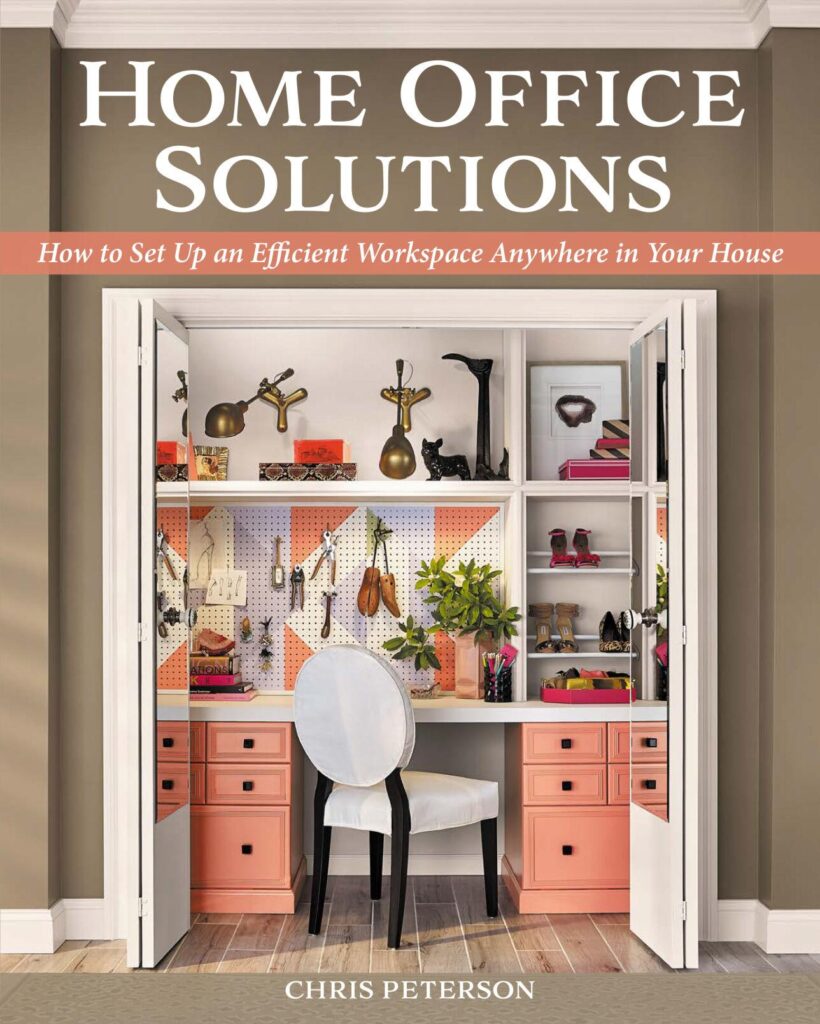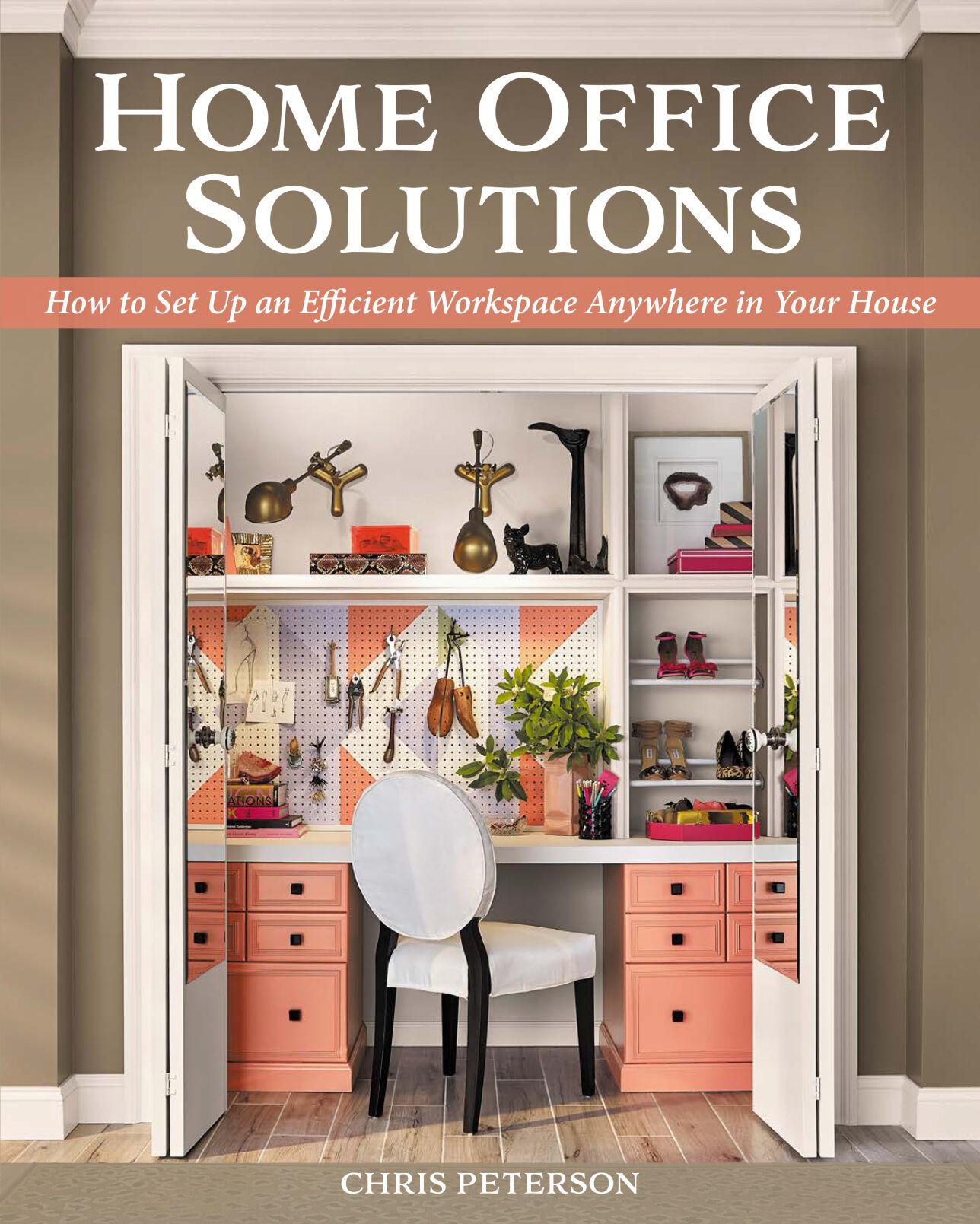
Converting a closet into a home office is one of many creative home office solutions author Chris Peterson covers in his newest book.
Is it me or, as the pandemic slowly whimpers away, are you, too, hearing those who have been cooped up working from home chanting: There’s no place like the office, there’s no place like the office?
Although the perks of working from home are real ― zero commute, less money spent on gas, less time figuring out what to wear, easy refrigerator access ― so is the struggle. The dogs time their bark fests for when you’re on a Zoom call. Your bored neighbor lies in wait for the moment you go out for the mail to ensnare you into a conversation about her crabgrass. Your partner eats the leftovers for lunch that you had your heart set on. And, face it, the gossip in the home office is subpar.
Over the years, I’ve had it both ways. When I had to go to an office, I wished I could work from home. When I had to work from home, I longed for a real workplace. Part of the appeal of a business office is that it is designed for one purpose ― to help you do your job. It’s not designed to help you relax, cook, entertain, sleep, bathe or raise children. Professional offices typically have proper lighting, ergonomically designed desks and chairs, reliable Wi-Fi, ample storage and the right vibe.
But what if your home office delivered all that?
“Great home offices don’t happen by accident,” says Chris Peterson, author of “Home Office Solutions: How to Set Up an Efficient Workspace Anywhere in Your House,” out late last year from Fox Chapel Publishing. “They require an incredibly thoughtful process that goes well beyond deciding where the desk will go.”
As the world creaks open, and more remote workers contemplate their workplace options, those who would like to keep working from home, at least some of the time, would do well to take a leaf, or maybe a few chapters, from Peterson’s book.
I recently chatted with Peterson, who was working out of his 900-square-foot townhome in Ashland, Oregon, about how we can make working from home work better:
How did you become a home office expert?
I’ve worked in publishing for 35 years, mostly writing about home improvement. I worked on Homeowner Magazine and have written DIY books for Black & Decker, including a series on how to build a home addition. For the last 15 years, I’ve worked full-time from home. In that time, I have lived in five places ranging from a tiny basement apartment to a large house. I created a home office in each one and learned a lot about what works and doesn’t.
What does every home office need?
I look at offices as needing three legs of a stool: They need to be super efficient, to be super comfortable and to look good. They have to fit the design of your home and not stick out like a sore thumb.
Tell me what doesn’t work. What backfires?
I had a huge backfire. I am a midcentury modern guy, so I decided to find a modern chair. I found one that looked really cool, but it was literally a pain in the rear. I learned that your chair is the most important part of your work environment. When buying one, you must sit in it first, because the right chair is so particular to your anatomy. Don’t make this purchase online. And don’t scrimp. This is not the place to save money.
Some houses have an obvious place for an office, but for those who have to find a space, what should they look for?
I cannot stress enough the importance of natural light. Of course, you have to be able to control it with adjustable window treatments, and you’ll need to position your desk and computer screen to avoid glare. Unless you can work in the middle of a busy household, don’t put your office in the hub of the home. Also consider your work. If you have clients in, you won’t want an office in your bedroom.
Your book illustrates many creative ways to turn the most unlikely crannies of a home into an office, like the space under the stairs, and a garden shed. What are other overlooked places?
Many people love the idea of putting their office in a closet, like the office featured on the book’s cover. It’s handy, and you can close the doors at the end of the day. One drawback is few closets have power outlets. Another option is a breakfast nook you don’t use. Finished attics also make surprisingly good office spaces if they have a window or skylight, and cooling and heating. You won’t be bothered by noise, and you can leave work behind at the end of the day.
What do you wish more people knew?
People think they need more desk space than they do. I have seen folks with desks so big they need their own ZIP code. In my first home office, I used a hollow-core door on two painted sawhorses as a desk. It was ridiculous. I didn’t use half that desk.
How can we incorporate our workspaces into our homes so they look like they belong?
Choose a desk not just for its size, but also to match your decor. Do you want glass, hardwood, melamine, painted? Then accessorize using colors that tie to your home. Bring in artwork, reference books, handsome storage containers or shelving, and a stylish desk lamp. Make it a place you want to be.
What advice do you have for couples who both work from home?
Physical separation appears to be key, and it’s even better if they choose opposite sides of the house. Some play music or listen to television while they work, which annoys quiet workers. Some bring clients in or have lots of phone meetings. The idea of a partners’ desk boggles my mind.
Original article found at https://www.nola.com/entertainment_life/home_garden/article_94406634-8b1d-11eb-8959-9b98f217bb1a.html

